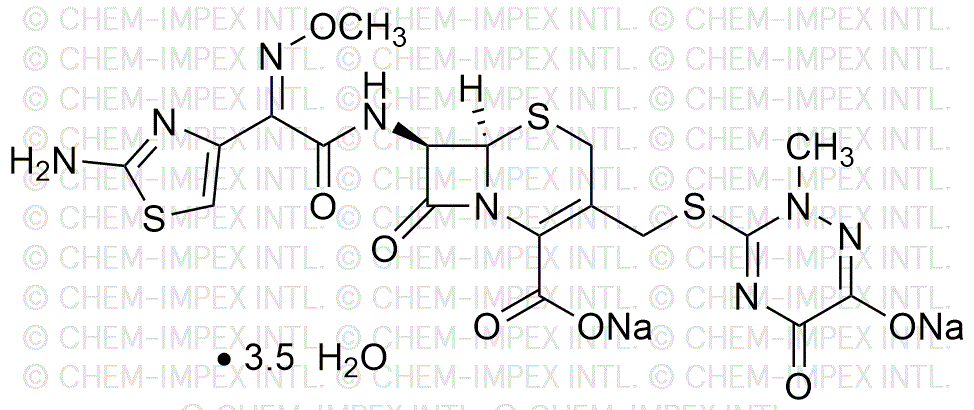Ceftriaxone disodium salt hemi(heptahydrate) is widely utilized in research focused on:
- Antibiotic Therapy: This compound is primarily used in treating a wide range of bacterial infections, making it essential in hospitals and clinics for effective patient care.
- Pharmaceutical Research: Researchers use it to study antibiotic resistance mechanisms, helping to develop new strategies for combating resistant bacterial strains.
- Formulation Development: In the pharmaceutical industry, it is used in the formulation of injectable medications, ensuring stability and efficacy in drug delivery systems.
- Clinical Trials: It plays a crucial role in clinical trials for new antibiotics, providing a benchmark for comparing the effectiveness of novel compounds against established treatments.
- Veterinary Medicine: The compound is also applied in veterinary settings to treat infections in animals, highlighting its versatility across different fields of medicine.
General Information
Properties
Safety and Regulations
Applications
Ceftriaxone disodium salt hemi(heptahydrate) is widely utilized in research focused on:
- Antibiotic Therapy: This compound is primarily used in treating a wide range of bacterial infections, making it essential in hospitals and clinics for effective patient care.
- Pharmaceutical Research: Researchers use it to study antibiotic resistance mechanisms, helping to develop new strategies for combating resistant bacterial strains.
- Formulation Development: In the pharmaceutical industry, it is used in the formulation of injectable medications, ensuring stability and efficacy in drug delivery systems.
- Clinical Trials: It plays a crucial role in clinical trials for new antibiotics, providing a benchmark for comparing the effectiveness of novel compounds against established treatments.
- Veterinary Medicine: The compound is also applied in veterinary settings to treat infections in animals, highlighting its versatility across different fields of medicine.
Documents
Safety Data Sheets (SDS)
The SDS provides comprehensive safety information on handling, storage, and disposal of the product.
Product Specification (PS)
The PS provides a comprehensive breakdown of the product’s properties, including chemical composition, physical state, purity, and storage requirements. It also details acceptable quality ranges and the product's intended applications.
Certificates of Analysis (COA)
Search for Certificates of Analysis (COA) by entering the products Lot Number. Lot and Batch Numbers can be found on a product’s label following the words ‘Lot’ or ‘Batch’.
Numéro de catalogue
Numéro de lot/série
Certificates Of Origin (COO)
This COO confirms the country where the product was manufactured, and also details the materials and components used in it and whether it is derived from natural, synthetic, or other specific sources. This certificate may be required for customs, trade, and regulatory compliance.
Numéro de catalogue
Numéro de lot/série
Safety Data Sheets (SDS)
The SDS provides comprehensive safety information on handling, storage, and disposal of the product.
DownloadProduct Specification (PS)
The PS provides a comprehensive breakdown of the product’s properties, including chemical composition, physical state, purity, and storage requirements. It also details acceptable quality ranges and the product's intended applications.
DownloadCertificates of Analysis (COA)
Search for Certificates of Analysis (COA) by entering the products Lot Number. Lot and Batch Numbers can be found on a product’s label following the words ‘Lot’ or ‘Batch’.
Numéro de catalogue
Numéro de lot/série
Certificates Of Origin (COO)
This COO confirms the country where the product was manufactured, and also details the materials and components used in it and whether it is derived from natural, synthetic, or other specific sources. This certificate may be required for customs, trade, and regulatory compliance.

